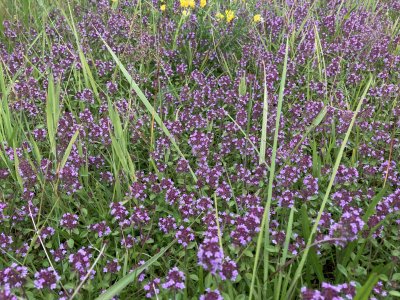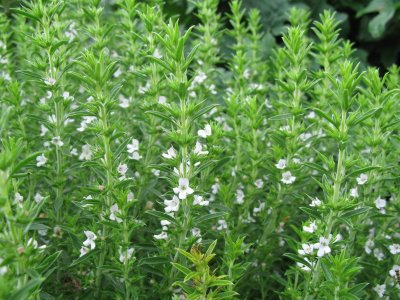BOTANICAL (Latin) NAMES FOR ESSENTIAL OILS
Education and training/
18.02.24
BOTANICAL (Latin) NAMES FOR ESSENTIAL OILS
'Aromatic Sense' the IATA newsletter, Summer 1996. Revised 2006
Over the years there has been an enormous push for utilising scientific
terminology in aromatherapy. Unfortunately, few of the people
promoting the use of Latin terminology have a working knowledge of
the essential oil trade, or for that matter botany, horticulture and
phytochemistry. Therefore, much misleading hype has become
entrenched in teaching.
I have been told by students from two well-known British aromatherapy
schools that they were told: "You can't be an aromatherapist unless you know
the correct Latin names of the essential oils". This is utter nonsense, as I have
not come across any aromatherapy school that knows the genuine botanical
origin of even a fraction of their oils.
Botanical names are unreliable when applied to essential oils because:
Most plants used for essential oil production - wild, or cultivated - consist of
numerous sub-varieties, cultivars, hybrids and clones. These can have
massively variable chemical compositions, but can still have similar fragrances.
In the case of "wild crafted" (this means plants gathered from the wild), the
chemical profile of their essential oils is unreliable. This is because in nature,
wild plants exhibit enormous genetic variations. This genetic diversity evolves
in nature as a species survival mechanism. If a disease breaks out, only some
of the plants will be susceptible and die, while others with slightly different
genes will survive. Many researchers have analysed essential oils from plants
in the wild. Even when the plants only grow a few feet apart and may have
common parents, the chemicals produced varied enormously in both volume
and type. This is partly due to wind pollination where genes from different
plants intermingle.
Very few essential oils come from ‘wild crafted’ plants’. In fact, this subject of
gathering wild plants for commercial exploitation is something International
Conservation organisations are in most cases, quite rightly, vehemently
opposed to.
If you want to see what a nonsense it is applying Latin names to a given
essential oil, then get hold of the following report. I use this in my classes to
illustrate how botanical variants from a given species or variety make a
nonsense of Latin names for essential oils: 'Preliminary Analysis of some
Lavender and Lavandin Cultivars'. Tucker A. Et al. Perfumer & Flavorist Vol. 9.
Aug./Sept. 1984. pp. 49-52. In this report, they analysed the oils yielded by
12 cultivars from Lavandula angustifolia. Each cultivar is given its commercial
name such as L.angustifolia, variety Nana alba. or L.angustifolia, variety
Mitchum grey. The composition differences between these cultivars is massive,
e.g. linalyl acetate in Hidcote variety is 56% but in Graves variety it is only
8%. Similar huge variations can be found in most of the other chemicals.
Due to the above, if you are told that an essential oil is "Lavandula
angustifolia", it tells you nothing other than that the oil is from that particular
species. It tells you absolutely nothing about potential therapeutic
activity. As an example, in the report above, some oils have a similar profile
to what the trade would consider lavandin, yet the plants are not hybrids like
lavandin, they are true lavenders.
If you are taught that for example, "tea tree oil must be Melaleuca alternifolia",
this is not strictly correct. There are a number of sub-varieties of alternifolia
used for tea tree oil. This is why the Australian Governments standard for tea
tree oil does not just specify alternifolia but adds "oil of Melaleuca, terpinen-4-
ol type".
Citrus trees are one of the better illustrations of the nonsense of Latin names
applied to the products they yield. Most citrus trees are grafted in the same
manner as roses and jasmine. Therefore, you have one variety as the head
and another as the root. So what’s the correct name for the oil or the oranges?
When I was in Tunisia, we saw the way the trees were propagated; they simply
cut the fruit in half, laid it on the sand and waited to see what came up. The
resulting seedlings were then grafted using traditional knowledge; each tree
will of course be slightly different. Anyone who has experienced a range of
REAL neroli oils, will know how the fragrance varies a lot between crops and
from one location to another.
So what can be made of all this:
If aromatherapy suppliers and teachers want to be pedantic about Latin
names, then ask them to get it right. The oil should say something like
Lavandula angustifolia, variety Nana alba, cutivar x, clone y. Of course, this will
never happen for reasons given later.
Horticulturists and plant geneticists developing commercial crop plants do not
like genetic diversity. This is because farming is now very much a
mathematical science. They need to know what yield and quality they are
going to achieve for all their hard work. In addition, many of the trades using
the products from those crops insist on standardised materials. This
standardisation of materials from commercial crops is not just applicable to
your wheat, rice, carrots, etc. but applies equally to most commercially grown
essential oil yielding plants.
Commercial developments in essential oil bearing crops have been going on for
well over a century, with constant developments of commercially superior
cultivars, and more recently clones. Aromatherapy training schools and the
essential oil importers are years behind such developments. The names they
give oils are simply the norm in the trade and may not be the actual
botanical name of the plants used to produce the oil. It is common that
even the large essential oil importers cannot find out what variety of plants are
being used in the country of origin. Bear in mind that the large customers for
essential oils are not particularly interested in such matters. They want to
know "what is the chemical composition", "how much is it per ton", "can you
keep up regular supplies". For a long time, there has been a total separation
between commercial oil production and end users. Producers will grow their
crops to meet the needs of their major customers in the food and fragrance
trades, not aromatherapy suppliers.
Numerous aromatherapy suppliers will tell you that: "all our oils are grown by
organic farmers, so we know what the plants grown are". There are indeed a
small number of genuine growers that sell these oils, but the vast majority of
such statements made by suppliers are lies.
It is well known by essential oils traders, that for example, the French export
something like 10 times the amount of lavender oil they actually grow.
Instead, they blend their oils with imported lavender, or more commonly with
chemicals. So if the oil is blended, how on Earth can its Latin name be
accurate?
In Egypt, which produces fabulous essential oils, it is common practice to blend
oils from different parts of the country. This is done so that an acceptable
fragrance is produced. The variety grown in one part may not be the same as
in another part. The resulting blends are great, but the Latin naming again
becomes almost meaningless.
So if the Latin name is not accurate how can I tell what is in the bottle?
The only answer to that one is ‘buyer beware’. The only way to tell if what is in
the bottle is what it should be, is with proper chemical analysis. Certain
chemical characteristics in essential oils can tell which geographical location it
has come from. Other characteristics can tell you the age, others can tell if
synthetic chemicals have been added.
So, what can we done to get suppliers to give accurate names to their oils?
I have not succeeded in stopping many in the trade calling ho leaf oil, “ho
wood oil”. The reason I was given was "well that’s what they have called it for
the last hundred years". So, if they won’t bother to get the origin of the oil
right, i.e. wood or leaf, what hope is there that they will give you accurate
botanical names? Answer: none.
If the Latin name tells you little, what should the name on the bottle say?
As far as I am concerned, all the bottle needs to say is "Lavender oil", unless
the oil is from a well-documented variety such as Lavandin. In EU countries
that would be illegal due to the idiots in the INCI names committees who don't
even get the Latin names correct themselves! The INCI lists are misleading
and inaccurate and it is a disgrace that such poorly constructed information
has become part of European law. Such grossly inaccurate information
emanating from EU trade committees has become part of National legislation.
In the case of oils with significantly different chemotypes, then this should be
specified using chemical criteria such as: Rosemary ‘cineol type’, rosemary
‘verbenone type’, rosemary ‘borneol type’. This chemical classification is
particularly important for oils like thyme or oregano where significant hazards
could be associated with using the wrong oil.
How many times have you seen in popular aromatherapy books and web sites
things like; ‘cinnamon oil’ without defining whether it is bark or leaf. It is
interesting that these people who are now so insistent on the use of Latin
names, sometimes don’t even bother to define whether they mean cinnamon
bark or cinnamon leaf oil. It is relatively common to find such gross
deficiencies in literature, and sometimes even on essential oil bottles.
Unfortunately, we have a trade that is overflowing with ill-educated
people (on essential oils), who are constantly jostling for positions of
influence and power. This is frequently done using phoney science,
rather than good sound knowledge. Insistence on the use of
misleading Latin nomenclature is but one example of their hype.
585
More posts


